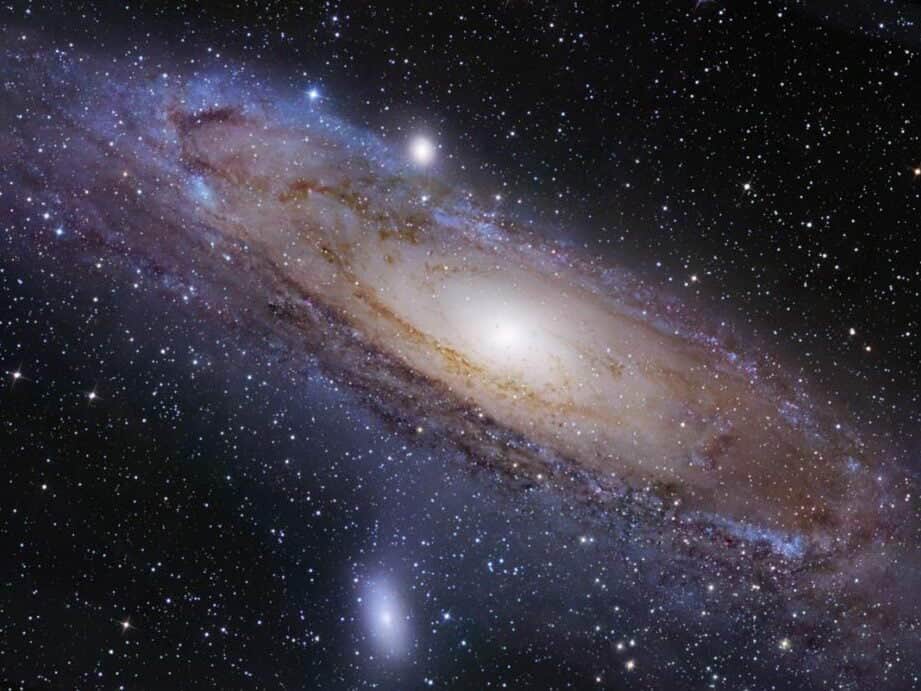The universe is incredibly vast, containing numerous immense celestial bodies such as planets, stars, galaxies, and galactic clusters. “Hitech” provides fascinating insights into the largest among them.
Read about “Hitech” on
We are aware that Earth is not the largest planet in the universe. In our vicinity, gas giants Jupiter and Saturn hold that title. However, the Sun is not the most massive star in the cosmos. It is merely a dwarf compared to some others. Even our own galaxy, the Milky Way, is not considered large in the grand scheme of things. So, which celestial bodies truly deserve the title of space giants?
The biggest nebula
The Tarantula Nebula holds the record as the largest nebula in our galactic vicinity and is also renowned for its vigorous star formation. Encompassing a massive expanse of 1,800 light-years, this incredible celestial phenomenon lies an astounding distance of 170,000 light-years away from our planet within the expansive Large Magellanic Cloud.
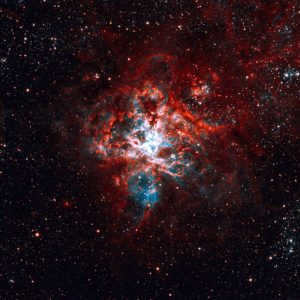
One of the most renowned and dynamic “nurseries” for stars, this stunning nebula gives birth to countless young stars amidst its captivating layers of gas and dust. A particularly active area can be found at the heart of the nebula, within the R136 star cluster.
The most colossal galaxy
IC 1101 holds the title for being the largest galaxy discovered thus far. Recent observations have revealed its massive size to be approximately 5.6-6 million light-years. To put it into perspective, our very own Milky Way galaxy spans only 100,000 light-years in diameter. If IC 1101 were positioned in the same location as the Milky Way, its farthest reaches would extend to our neighboring galaxy, Andromeda.
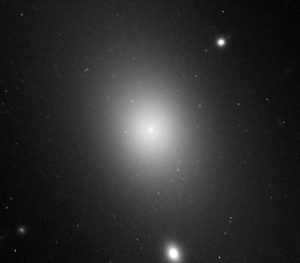
IC 1101 can be found in the constellation Virgo, which boasts over 100 trillion stars. Its colossal size places it at a distance of 1.04 billion light years away from Earth.
The most massive exoplanet
Back in 2005, the discovery of GQ Lupi b left astronomers astounded. This celestial body orbits its young star at an astonishing distance – it is 2.5 times farther from the Sun than Pluto. GQ Lupi b exhibits characteristics of both a planet and a brown dwarf (a type of small star known as a “Hitech”).
Further research has failed to provide a definitive answer, but current theories propose that GQ Lupi b has a radius approximately 3.5 times that of Jupiter. If it is indeed an exoplanet, then it would be the largest ever found.
The most enormous star
When it comes to finding the most massive star, things get complicated. The majority of stars are variable, meaning they undergo changes in brightness, radius, and effective temperature throughout their lifetimes. Until 2020, it was believed that the largest star was UY Scuti (also known as UY Shields), a hypergiant star with a radius about 1,700 times that of the Sun. If UY Shields were placed at the center of our solar system, its edge would extend just past Jupiter’s orbit. The gas and dust emitted by the star would extend even further, beyond the orbit of Pluto.
However, revised data has revealed that UY Scuti is not actually the largest star. As of 2020, that title belongs to Stephenson 2-18.
TON 618 can be found in the constellation Canes Venatici and is located at a distance of 10.37 billion light-years from Earth.
The most immense individual entity
At a point in time when the Universe was merely a fraction of its present age, a group of 14 galaxies commenced actively engaging with one another. They collided, uniting to form the largest gravitationally bound celestial structure known to us, the protocluster SPT2349-56.
In due course, it will amalgamate into a solitary galaxy, boasting a mass that exceeds that of the Sun by a mind-boggling quadrillion times. Interestingly enough, SPT2349-56 was only recently uncovered in 2018.
Quasars, which are found at the core of active galaxies, are some of the most luminous entities in existence. They emit a magnitude of energy that is a thousand times greater than that of the Milky Way, which itself contains anywhere from 200 to 400 billion stars. In the summer of 2018, a team of astronomers from the National Radio Astronomy Observatory in the United States made a groundbreaking discovery – they detected the most radiant quasar ever observed. This particular quasar is situated a staggering 13 billion light-years away from Earth and first appeared when the universe was still in its infancy, at a time when its size was less than 10% of its current magnitude.
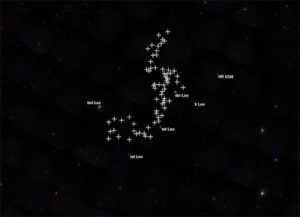
Clusters of quasars, like the Huge-LQG (Huge Large Quasar Group), can sometimes form. This is an immense cosmic assemblage of 73 quasars that possess a collective mass of 6.1 quintillion (that’s 1 followed by 18 zeros) Suns.
The limit is beyond infinity
Scientists are continuously exploring the vastness of the universe. It is possible that the largest stars, planets, and galaxies we are familiar with are actually diminutive in comparison to the discoveries that await humanity in the future.
Find out more


It is also known as a nebula, although the term nebula refers to a cloud of interstellar gas, which does not accurately describe Andromeda.
Astronomers previously believed that this celestial object was a nebula. However, at that time, there was no way to determine the composition of this distant luminous cloud. With the development of telescopes and advancements in technology, scientists later discovered the true nature of this distant object. They identified it as the Andromeda galaxy, which is home to a vast number of stars.
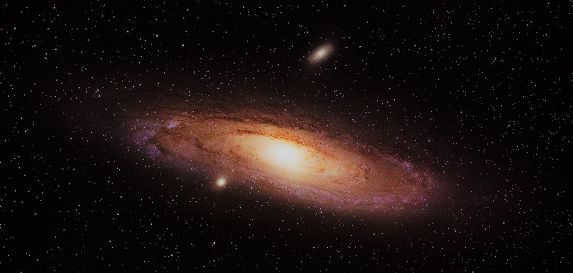
The Andromeda Galaxy received its name from the princess Andromeda in ancient Greek mythology. According to the myth, she was the wife of Perseus and transformed into a constellation after her death. Numerous space objects have been named after mythological heroes, reflecting the reverence ancient people held for these stories and their characters.
It is fascinating to note that this galaxy has multiple designations. It is alternatively referred to as a nebula and officially recognized as M31, the numerical identifier assigned by Charles Messier. Moreover, a recent catalog of nebular entities has bestowed upon it the name NGC 224.

As we have discovered, Andromeda is our neighboring galaxy, which is significantly larger in size. Comprising approximately 1,000 billion stars, it shines brightly in the night sky. Recent data suggests that many of these stars bear a striking resemblance to our very own Sun.
Andromeda, like our own Milky Way, is a spiral galaxy. It boasts a mass of around 800 billion times that of our Sun. As for the age of the galaxy, it remains uncertain, although its existence has been known since ancient times.
The Formation of the Andromeda Galaxy
Surprisingly, at the heart of this nebula lies a supermassive black hole. Recently, astronomers have made a remarkable discovery of a cluster of young stars. These stars shine with a blue hue and orbit around the central region. The number of these young stars has now reached approximately 400. Alongside these, older and cooler red stars have also been identified.
Furthermore, the Andromeda galaxy is composed of various components including star clusters, interstellar gas, as well as other galaxies and black holes. Scientists have additionally observed the presence of several dwarf galaxies located on the outer edges of the nebula. It is believed that Andromeda has absorbed these dwarf galaxies, resulting in their inseparable companionship.
There exists a hypothesis suggesting the possible existence of planets within the Andromeda galaxy. However, to date, no concrete evidence has been found to support this claim.
Where can the Andromeda galaxy be found?
The Andromeda galaxy is a part of the local group of galaxies, which also includes the Milky Way and the Triangle galaxy. Among these galaxies, the Andromeda galaxy is the largest.
From an astronomical perspective, the Andromeda galaxy is situated in the constellation Andromeda and is approximately 2.52 million light years away from Earth. It is a close neighbor of our own galaxy, the Milky Way, and is actually larger in size.
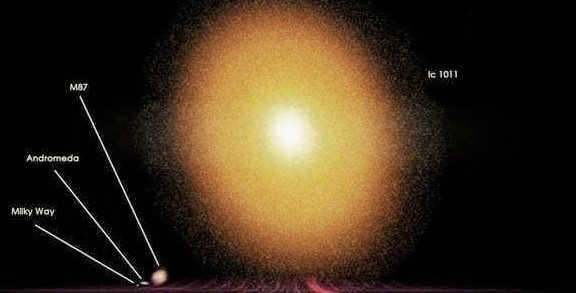
Observing the Andromeda Galaxy
Interestingly, without the need for a telescope, we are able to observe this particular galaxy from Earth. Admittedly, it may only appear as a tiny speck. Consequently, it can be quite challenging to comprehend and ascertain its immense magnitude.
Perhaps you have an interest in the query: how can one locate and identify a nebula in the sky by oneself? There is no complexity involved in this process. It simply requires possessing a basic understanding of the stars in the celestial sphere.
To begin, one must locate the constellation Cassiopeia in the northern hemisphere. It bears a resemblance to an expansive letter W.
Just below this constellation, a series of three luminous stars will come into view. Drawing an imaginary vertical line from the central star, known as Mirach, will reveal a small, discernible dot. This is the Andromeda nebula we are in search of. Incidentally, we have been witnessing the luminosity of this celestial body for a span of two to two and a half million years, according to scientific claims.
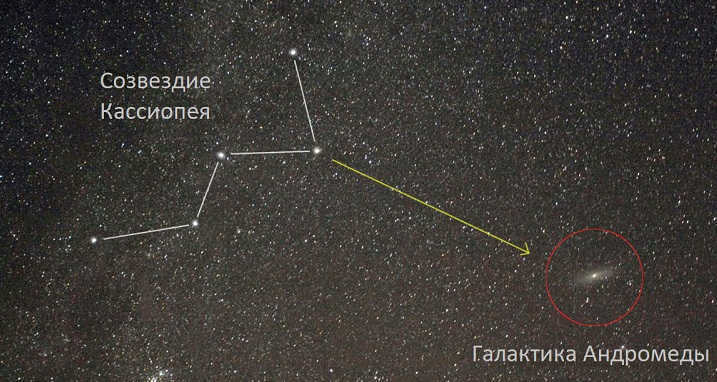
Optimal viewing conditions
To catch a glimpse of Andromeda from Earth, there are a few key factors to consider. Firstly, selecting the appropriate time is crucial. The most favorable periods are nights in August and September, as well as evenings from October through December, as the galaxy will be positioned higher in the sky during these times. At other times, there is significant light absorption by the atmosphere, which hampers visibility.
Secondly, it is essential to have clear and transparent skies, as this will offer a better viewing experience and allow for more detailed observations.
Lastly, the brightness of urban areas poses a significant challenge for stargazing. The illumination from streetlights and bright billboards can obstruct the view of celestial objects in the sky.
Therefore, it is important to carefully choose the right location and time for observing Andromeda. With these considerations in mind, a rewarding experience awaits!
Scientists have issued a warning that our galaxy and Andromeda are likely to collide in the future. These predictions are based on careful observations of their respective movements. Andromeda is continually moving towards our Sun, and experts have even calculated the speed at which this movement is occurring: a staggering 300 kilometers per second. However, there is still some disagreement among scientists about what exactly will happen when the galaxies meet. It is possible that the speed of Andromeda’s movement will increase, or it could decrease, or it could remain constant and the collision will still occur. If no changes occur, this collision is estimated to take place in approximately seven billion years.
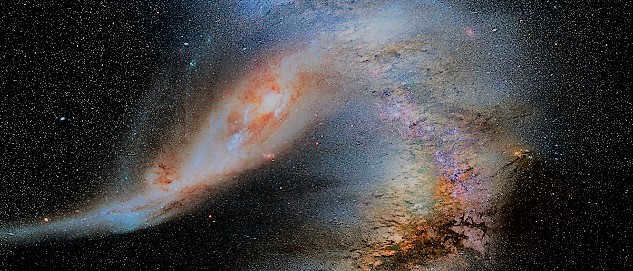
If this event were to occur, the Milky Way would be consumed by Andromeda, resulting in the formation of a brand new supergalaxy. As a result, the solar system would undergo a significant shift in its position, potentially moving thousands of light years away from the galactic center.
Interestingly enough, scientists assure us that despite these cosmic changes, life on Earth would remain largely unaffected. Apart from the shifting cosmic landscape and the rearrangement of celestial objects, of course.
Over time, it is highly likely that we will continue to uncover more information about the Andromeda galaxy. After all, scientists are actively engaged in studying and researching it. Furthermore, it is an incredibly fascinating subject of exploration.
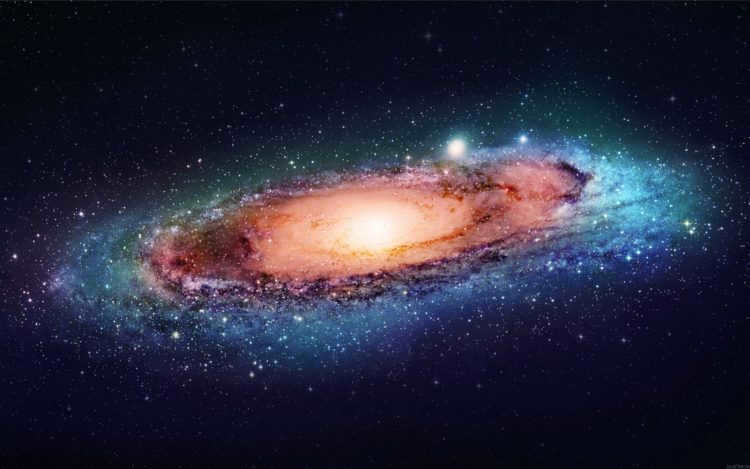
- Galaxies
The Andromeda Galaxy, also known as Andromeda, M 31, NGC 224, or Andromeda Nebula, is a spiral galaxy of type Sb and is the largest galaxy in the Local Group. It is the nearest large galaxy to the Milky Way and contains approximately 1 trillion stars, making it 2.5-5 times the size of the Milky Way. Situated in the constellation Andromeda, it is located at a distance of 2.52 million light-years from Earth. The galaxy’s plane is inclined at an angle of 15 degrees to the observer’s line of sight, and it appears to have an apparent size of 3.2 × 1.0 degrees. Its apparent magnitude is +3.4m.
Observational data
Physical characteristics
Etymology

Andromeda is an ancient constellation that can be found in Claudius Ptolemy’s Almagest catalog of the celestial sky.
According to Greek mythology, Andromeda was the daughter of King Cepheus and Queen Cassiopeia of Ethiopia. She was offered as a sacrifice to the sea monster Cetus (also known as the Whale or Keto) in order to appease its destructive wrath upon the land. However, she was ultimately saved by the hero Perseus. After her death, she was immortalized as a constellation. The neighboring constellations of Perseus, Cassiopeia, Cetus, and Cepheus are also named after characters from this myth.
The Andromeda Galaxy has been familiar to humans since ancient times, being first observed by the Chaldean priests and accomplished astronomers of the ancient world. The ancient Greeks were also aware of its existence and it was through their influence that the galaxy received its name. Andromeda, the protagonist of the ancient Greek myth, was the daughter of King Cepheus of Ethiopia. As a consequence of Cepheus’s arrogance, the god of the seas Poseidon (also known as Neptune) commanded the king to sacrifice his daughter to the sea monster Kraken, or else the entire kingdom would suffer devastating natural calamities.
However, the courageous hero Perseus came to the rescue of Princess Andromeda, defeating the fearsome Kraken while riding his winged horse Pegasus. As a result, the names of these beloved mythological figures were bestowed upon bright stars in the night sky. Much later, it was discovered that Andromeda is not merely a star, but an entire galaxy, while the Perseus cluster is even more extraordinary – a true gathering of galaxies.
Over the course of centuries, numerous astronomers have observed and studied Andromeda. In 964, the Persian astronomer Abdurahman al-Sufi affectionately referred to it as the “Little Cloud”. In 1780, William Herschel observed the galaxy through his telescope and believed it to be relatively close to us.
The initial photograph of the Andromeda system was captured in 1887 by Issac Roberts, a Welsh astronomer from England, who mistakenly believed it to be a part of our own Milky Way galaxy. It wasn’t until the early 20th century that it was realized that the Andromeda system is actually an entirely separate galaxy, with its own collection of stars. In 1917, American astronomer Heber Curtis made an observation of Andromeda and noticed that the stars in the Andromeda Nebula were significantly dimmer than those found elsewhere. He estimated their distance to be 500,000 light-years away. Curtis also introduced the idea of spiral nebulae as separate and complete galaxies, which became known as the “island universes hypothesis”.
Experimental verification of Curtis’s concepts occurred in 1923, thanks to the efforts of another remarkable American astronomer, Edwin Hubble, who constructed his renowned 100-inch telescope. Edwin Hubble was the first to compute the precise distance to the Andromeda system – 2.5 million light-years, and he definitively demonstrated that our Universe is comprised of numerous galaxies, not solely the Milky Way (as was previously assumed), with Andromeda representing just one of countless galaxies in existence.
The primary characteristics of Andromeda
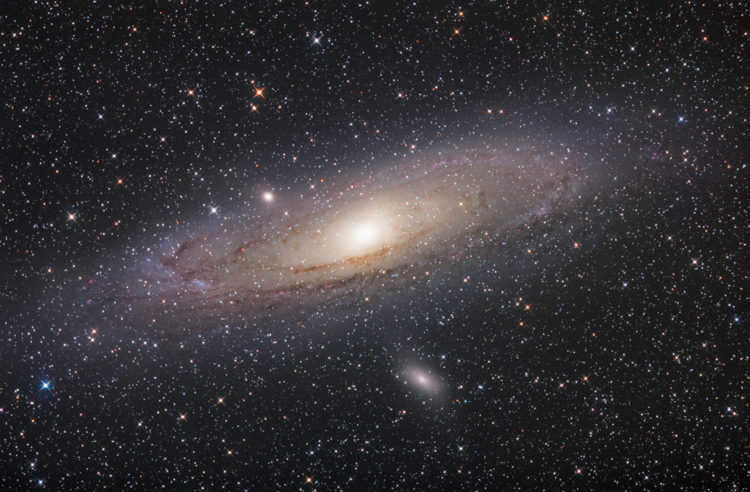
The Andromeda spiral galaxy, previously referred to as the Andromeda Nebula or M31 (31st in the renowned Messier catalog), is renowned as one of the most notable “star islands”. In addition to its universal appeal as yet another “closest-nearest-biggest-coolest” celestial entity, M31 is also distinguished for its scientific significance. Indeed, there are only a few galaxies in which millions of distinct stars can be observed, even with the aid of advanced telescopes. And there are even fewer galaxies that are approaching us at a velocity of approximately 110 km/s, which is the case with Andromeda.
Furthermore, until recently, scientists believed that our galaxy, the Milky Way, was a mere reflection of the Andromeda galaxy. Despite being smaller in size, our galaxy is not much lighter, and M31 was considered a mirror image of the Milky Way. However, as astronomy advanced and scientists gained a deeper understanding, this myth was debunked. It was discovered that the Milky Way and Andromeda actually belong to different subclasses of spiral galaxies, and their arm patterns differ. Nonetheless, they still share many similarities, such as their tendency to absorb dwarf satellite galaxies and their similar internal structures.
Now, let’s delve into the specifics of Andromeda’s characteristics to better grasp its image – and to avoid confusion, let’s compare them to the parameters of our own galaxy.
Size of the Galaxy
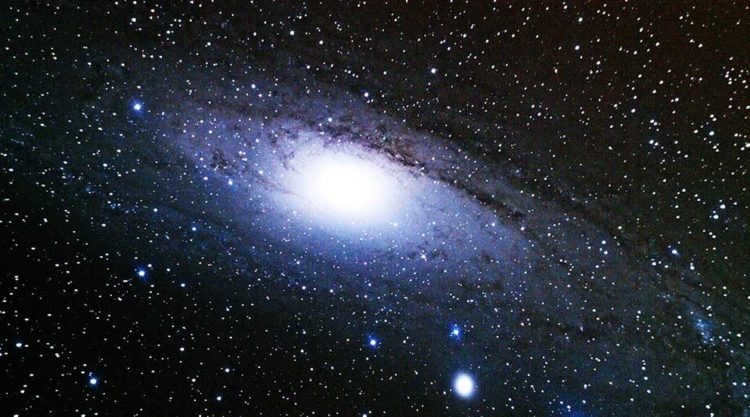
- One of the most striking and undeniable features of this galaxy is its immense disk span. In the case of M31, it stretches across a distance of 110,000 light years from its center. This measurement is approximately four times larger than the size of our own Milky Way galaxy, which has a relatively modest radius of 26,000 light years. While there may be “star islands” that are hundreds of times larger than Andromeda, it still holds the title of being the largest galaxy within the local group.
- The situation is similar when it comes to the mass of Andromeda. Since over 95% of the substance in any galaxy consists of dark matter, it can be assumed that the percentage is roughly the same for Andromeda – therefore, the mass of the galaxy should correspond to the mass of visible stars and gas. The Andromeda galaxy has a mass of 1.5 trillion solar masses, which in conventional units translates to a staggering 29 followed by 50 zeros kilograms! However, the Milky Way is not to be outdone – its mass ranges from 0.8 to 1.5 trillion solar masses.
Galaxy Classification
The galaxy known as the Andromeda Galaxy falls into the Hubble Class Sb category. In other words, it displays the characteristics of a spiral galaxy with evenly distributed spiral arms surrounding a central bulge that contains an abundance of old, bright stars. On the other hand, the Milky Way is classified as a SBbc galaxy, which is a type of spiral galaxy with a bar-like structure. The main difference between our own “star island” and M31 lies in this bar-like structure, which extends outward from the bulge and connects it to the spiral arms.
It is indeed true that there is proof suggesting that Andromeda might also have a leaper. This evidence was discovered through the 2MASS (2 Micron All-Sky Survey) infrared space exploration initiative. The survey revealed that the bulge of the Andromeda Galaxy, which is concealed by gas and dust clouds and can only be detected through infrared radiation, has a square configuration. This unique shape is significant enough to classify Andromeda as a SB-class galaxy.
However, excluding the junction, the Andromeda Nebula possesses distinct characteristics compared to the Milky Way. The spacing between its spiral arms is wider in comparison to our galaxy. While the lines of these arms are typically not completely smooth, certain arms in the MZ1 galaxy have suffered significant distortions. These distortions are the result of “pinholes” created by a smaller galaxy that passed through Andromeda’s disk. Such occurrences are not rare for our neighboring galaxy, as it formed around 10 billion years ago from multiple proto-galaxies and has assimilated at least three of its companions throughout its existence.
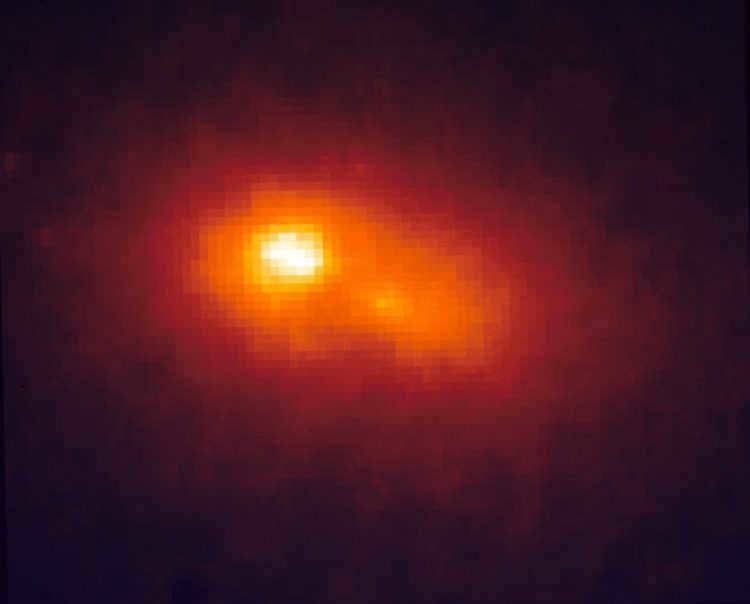
The core of the M31 galaxy, along with the cores of numerous other galaxies (including the Milky Way), contains potential candidates for supermassive black holes. These objects have the capacity to exceed a mass equivalent to one hundred and forty million times that of our Sun. In 2005, the Hubble space-based telescope made a remarkable finding, detecting a mysterious disk encompassing youthful blue stars encircling supermassive black holes.
Like the way planetary bodies revolve around their suns, these objects also revolve around the relativistic object. Astronomers are perplexed by the proximity of such a torus-shaped disk to such a massive object. Based on calculations, the immense tidal forces exerted by supermassive black holes should limit the condensation of gas-dust clouds and the formation of new stars. Additional observations will likely shed light on this enigma.
Following the discovery of this disk, another important piece of evidence emerged in support of the overall theory regarding the existence of black holes. Astronomers first observed a blue glow in the center of the galaxy in 1995, thanks to the Hubble Space Telescope. It wasn’t until three years later that they were able to identify the glow, along with a group of blue stars. Then, in 2005, using a spectrograph attached to the telescope, observers were finally able to determine that the cluster actually consisted of over four hundred stars, which had likely formed approximately two hundred million years ago.
The diameter of stars that were formed in the disk is limited to just one light-year. Within the disk’s central region, older and cooler red stars have been observed, which were previously detected using the Hubble telescope. The presence of radial velocities of stars within the disk was able to be calculated. These velocities were unusually high, reaching 1000 km/s or 3.6 million km/h due to the gravitational influence of the NFD. At this speed, a spacecraft could circle our planet in just forty seconds or travel a distance equivalent to the Earth-Moon distance in six minutes.
Aside from supermassive black holes and a disk containing blue stars, there are also other entities situated in the nucleus of M31. For instance, in 1993, a binary star cluster was detected at the heart of the Andromeda Galaxy. This revelation came as a shock to the scientific community, as the fusion of the two clusters into a singular entity could have occurred within a relatively brief span of time, approximately one hundred thousand years.
The ring and disk of our galaxy are facing towards us, suggesting a connection between them. A team of European astronomers used the XMM-Newton telescope to examine the center of the Andromeda galaxy and found 63 distinct sources emitting X-ray radiation. Out of these sources, 46 were identified as low-mass X-ray binary stars, while the rest are believed to be either neutron stars or potential black holes within double systems.
Different items
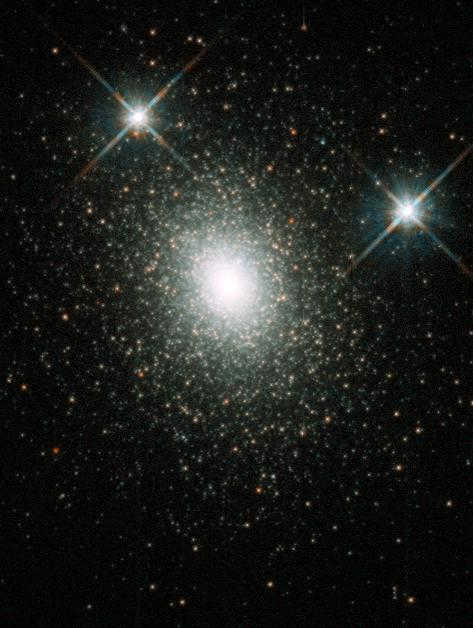
Around 460 globular clusters have been documented within the galaxy. The largest among them, known as Mayall II or G1, boasts a luminosity surpassing that of any other cluster within the Local Group, and even outshines Omega Centauri, the brightest cluster in the Milky Way. Situated approximately 130,000 light-years away from the heart of the Andromeda Galaxy, this cluster harbors a minimum of 300,000 ancient stars. The composition of its structure, along with the presence of stars from diverse populations, strongly suggests that it originated as the core of an ancient dwarf galaxy that was eventually absorbed by M31. Recent research reveals the presence of a black hole candidate at the center of this cluster, with a mass equivalent to 20,000 Suns. Similar objects have also been found in other clusters.
The star PA-99-N2 is located within the galaxy and has an exoplanet orbiting around it, which is notable for being the first exoplanet discovered outside of the Milky Way.
Satellites of Andromeda
Andromeda has several satellites that orbit around it. These satellites are dwarf galaxies, each containing only a few billion stars. Two of these satellites, M32 and M110, can be clearly seen in all photographs of Andromeda.
M32 was likely a spiral galaxy in the recent past, but its formation of spiral arms has been suppressed by the powerful gravitational forces from its neighboring galaxy. The same gravitational forces also facilitate the exchange of stars with M110. Using the CFHT telescope, which is conveniently located in Hawaii, multiple dwarf galaxies have been discovered. These galaxies all orbit in the same plane around the Andromeda galaxy.
Observations
The optimal time to observe the Andromeda Nebula is during the autumn and winter seasons. In the vast expanse of the rural night sky, the radiant and diffuse oval shape of M31 can be easily spotted even by novice stargazers. It is worth noting that this nebula holds the distinction of being the farthest object visible to the naked eye from Earth. Due to the finite speed of light, we are actually observing it as it appeared over 2.5 million years ago. It’s fascinating to think that there were no modern humans on Earth during that time period! However, it is important to remember that according to the principles of the Special Theory of Relativity, we cannot truly comprehend what the Andromeda galaxy looks like in the “present moment” since our perception is bound by the limitations of our own existence.
Even when using binoculars, the galaxy can still be seen in the brightly lit skies of large cities. However, when observed through amateur telescopes with a medium aperture (150-200 mm), the experience is often underwhelming. Even in the clearest sky and on a night without a moon, the galaxy appears as a large, glowing ellipsoid with indistinct and increasingly faint edges, along with a bright center. A keen observer may be able to detect a hint of dust on the northwestern (closer to us) side of the galaxy, as well as a slight localized increase in brightness in the southwest (a region of significant star formation in our neighboring galaxy). Apart from these details, there are no other discernible features, except for two small elliptical galaxies known as M32 and M110. It’s nothing like the vibrant and colorful images often seen in popular publications!
Unfortunately, these are the idiosyncrasies of human night vision. Despite the incredible sensitivity of our eyes to light, they cannot accumulate light over extended periods of time like advanced photodetectors can. Additionally, our eyes sacrifice color recognition and visual acuity in order to achieve night sensitivity. As a result, when observing diffuse objects in the depths of space, we can only see faint, gray images against a dark gray background. Furthermore, the immense size of M31 further enhances its contrasts and details.
Planets in the Andromeda Galaxy and the Existence of Intelligent Extraterrestrial Life
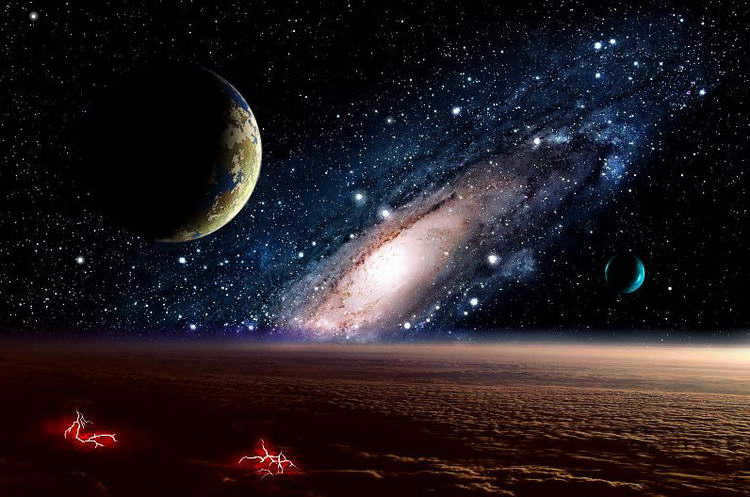
Here we depart from the firm ground of scientific facts and enter the slippery ice of speculations and hypotheses. Given the vastness of the Andromeda system, with its multitude of stars and even more planets, it is quite possible, at least according to the principles of probability theory, that among these many planets there exist some that are suitable for sustaining life. And if that is indeed the case, then it follows that life has emerged there, not only in the form of animals but also in the form of highly intelligent beings. Although we can only speculate and indulge in a bit of imagination regarding the appearance of the inhabitants of the Andromeda galaxy.
In the computer game Mass Effect Andromeda, once again, the inhabitants of Andromeda are depicted as humanoid beings, bearing a resemblance to us – possessing two hands, two legs, and one head. However, it is important to note that intelligent life in Andromeda may exist in entirely different forms.
The future collision between the Milky Way and the Andromeda galaxy
Scientists predict that in approximately four billion years, the Milky Way and the Andromeda Galaxy (M31), which are the two largest galaxies in the Local Group, will collide. This event is frequently used as a model in simulations of galactic collisions.
The effects of this collision will be incredibly slow and may not be observable from Earth with the naked eye. There is a small chance of a direct impact on the Sun and planets. However, it is possible that the collision could result in the complete ejection of the Solar System from the new galaxy due to gravitational forces, turning it into a traveling intergalactic object. This would not have any negative consequences for our system, other than the gradual disappearance of the beautiful starry sky. The Sun’s magnetosphere might be able to shield us from intergalactic radiation. The likelihood of being ejected from the Milky Way’s disk during the initial phase of the collision is currently estimated at 12%, while the probability of being captured by Andromeda is 3%. At that point, it will be much more significant for life on Earth that the Sun undergoes evolution and transforms into a red giant in 5-6 billion years.
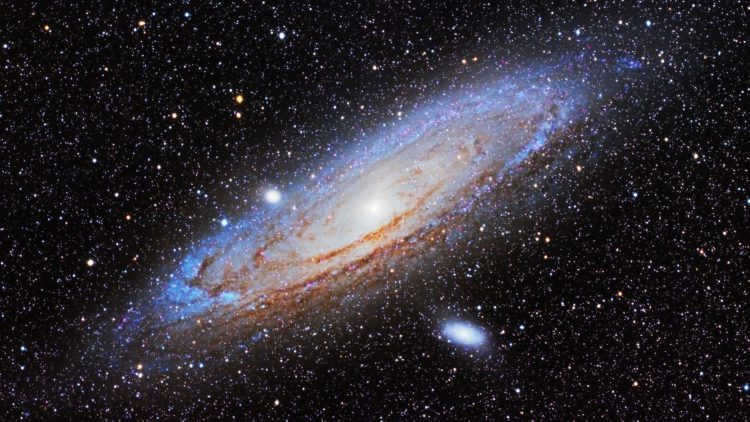
Description of M31 in the Messier catalog (August 3, 1764).:
M31 is a stunning nebula located in the Andromeda Belt, resembling the shape of a spindle. Charles Messier observed it using different instruments, however, he never identified it as a star. When viewed visually, it appears as two light cones or pyramids, with their axes extending from the northwest to the southeast. The distance between the two light peaks is approximately 40 angular minutes, and the overall base of the pyramids measures around 15′. This nebula was initially discovered by Simon Marius and has been extensively studied by numerous astronomers. Le Gentil created a detailed drawing of the nebula, which was published on page 453 of the Academy’s Memoirs in 1759, indicating a diameter of 40′.
Moreover, Flammarion stated that Messier incorporated details about the M 31 nebula into his personal version of the catalog manually: I employed various tools, including a remarkable Gregorian telescope with a length of 30 feet, a sizable six-inch mirror, and a magnifier with a power of 104x. It can be confidently asserted that there are no stars located at the core of this nebula. The luminosity gradually diminishes until it vanishes entirely. Previous observations were conducted using a 4.5-foot Newtonian telescope outfitted with a silk micrometer string.
Video
The video content is a visual medium that is used for entertainment, education, and communication. It is a powerful tool that allows people to share their ideas and stories in a unique and engaging way. Video can be found in various forms, including movies, television shows, documentaries, and online videos. It has become increasingly popular in recent years, with the rise of platforms such as YouTube and Netflix. Video content is often used to convey information and emotions in a way that is more impactful than written or spoken words. It can capture the attention of viewers and evoke strong reactions. In addition to entertainment, video is also used for educational purposes. It can be used to teach complex concepts and demonstrate practical skills. Video content is a versatile medium that can be used in a wide range of industries, from marketing and advertising to journalism and filmmaking. It is constantly evolving, with new technologies and techniques being developed to enhance the viewing experience. Overall, video content is a valuable and influential form of communication that has the power to inform, entertain, and inspire.
Galaxies
The magnificent Andromeda spiral galaxy, also known as the Andromeda Nebula, is the largest in the local group. This group consists of the Milky Way, the Triangle Galaxy, and Andromeda proper. These galaxies are gravitationally connected to each other.
In terms of size, Andromeda is simply enormous. It spans over 260 thousand light years and contains trillions of stars, dwarf galaxy satellites, and globular clusters. Additionally, scientists have recently discovered a new cluster of stars in Andromeda that has a unique appearance and is located in the galaxy’s halo (an invisible component). The scale of this nebula is truly impressive, as it is 2.6 times larger than our Milky Way. Its approximate mass is over 800 billion times that of our Sun.
Meeting
Let’s begin our introduction with the fact that the initial documented reference of the Andromeda Galaxy as a diminutive cloud can be found in the astronomical tables “The Book of Fixed Stars” by the renowned Persian astronomer As-Sufi. He resided and conducted his work at the palace of Adud Ad-Daula in Isfahan, and the entry is dated back to 964.
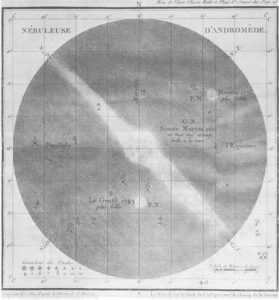
Object M31 – The Andromeda Nebula. Drawing by S. Messier. Published in 1807
A more detailed depiction of the galaxy was created by Simon Mayr, a German physician and mathematician. Using a telescope to observe the starry sky, Mayr was one of the first European astronomers to notice the Andromeda Nebula in December 1612.
The renowned comet hunter, Charles Messier, a French astronomer, included the nebula in his famous catalog as M 31.
William Huggins, an amateur astronomer from England, made his own significant contribution by proposing that M 31 contained a vast number of individual stars. He reached this conclusion in 1864, which was subsequently confirmed by further observations.
The initial photographs of the Andromeda Nebula were obtained at the observatory established by Isaac Roberts in 1885. Through his experiments with a specialized telescope for capturing celestial objects, Roberts was able to capture images in October 1887 that clearly revealed the spiral structure of the nebula.
Vesto Melvin Slifer, an esteemed American astronomer, made a significant contribution to our understanding of the Andromeda Galaxy’s motion. In 1913, using spectral analysis, Slifer measured the radial velocity of the galaxy and determined it to be 300 kilometers per second, indicating its movement towards our Sun.
The Chandra X-ray Observatory, launched in ’99, sends data back to Earth while in orbit. Studies have revealed that the Andromeda galaxy harbors a significantly greater amount of cold gas than previously estimated. This newfound knowledge allows for more accurate determination of the temperature, density, and movement of interstellar gas in space.
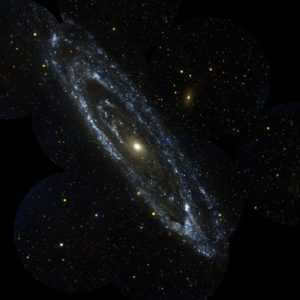
The Andromeda Galaxy reveals only a fraction of its mysteries. In 1998, scientists unraveled the origin of the blue glow, which emanates from the double nucleus. They discovered a cluster of over four hundred blue stars, but it is believed that there may be even more. These stars have an impressive age, considering their youth in the vastness of space. Their formation occurred just over two hundred million years ago, as they gravitated towards a potential black hole.
Calculations have revealed that the mass of the supermassive black hole is more than 140 million times that of our sun. A group of young and old stars has formed a disk-like structure, resembling a bagel in shape. In the center of this structure, you can find the old, red stars, while the young stars are scattered around the edges. The radial velocity of these stars is incredibly high, reaching speeds of up to one thousand kilometers per second. What intrigued scientists the most is that these stars orbit the black hole in a manner similar to how planets revolve around our own sun. As a result, this mysterious disk, with a diameter of one light year, holds many more enigmatic secrets.
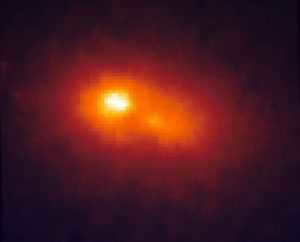
A galaxy with two cores
There is another group of stars in the middle of the Andromeda Nebula that raises some doubts. It is double, but for some unknown reason the fusion did not occur, even though all calculations made by scientists indicate that it should have happened millions of years ago. According to the theory proposed by Canadian astrophysicist Scott Tremain, it is likely a disk surrounding a young star bagel, located approximately five light years away from the black hole. However, this is still just a speculation and only time will reveal the truth.
The Andromeda Galaxy can proudly claim to have the most brilliant cluster, Mayall II, which was discovered in 1953 by two American astronomers, Nicholas Ulrich Meiol and Olin Jeuk Eggen. Situated one hundred and thirty thousand light years away from the nebula’s center, it is believed to be the center of a small galaxy that was once absorbed by the Andromeda Nebula. This is evident from the presence of multiple generations of stars, numbering over three hundred thousand, and even a potential black hole with a mass twenty thousand times greater than that of the sun. In terms of size and luminosity, it surpasses the renowned Omega Centauri.
Astronomers have a great deal of interest in the recent discovery of new clusters located in the halo of the galaxy in 2005. These clusters are of significant size, stretching hundreds of light years. However, amidst the vast number of stars, numbering in the hundreds of thousands, the distances between them are much greater than in globular clusters. This observation leads to the conclusion that these new clusters occupy an intermediate state between globular clusters and galaxies, taking on a spheroidal shape. The brightness of these clusters is relatively low, and they contain very little stardust.
Satellite galaxies
To start off, let’s define the concept of satellite galaxies and explore how many of them can be found in the Andromeda galaxy. Satellite galaxies are significantly smaller in terms of mass and are held in orbit near a larger galaxy, primarily due to the gravitational pull exerted by the larger galaxy. The Andromeda galaxy, for instance, is accompanied by approximately 36 such satellite galaxies. Each of these satellite galaxies contains billions of stars, and some even harbor black holes. Only a few of these satellites can withstand the influence of the larger galaxy, while the rest eventually merge with the main galaxy, resulting in a unified system. The gravitational forces at play during this process lead to the formation of intriguing structures.
Now, let’s delve into a summary or rather a review of the largest companions within the Andromeda galaxy.
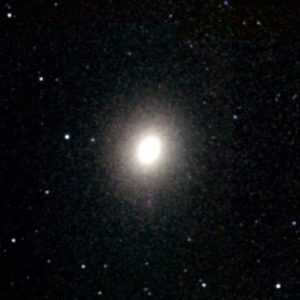
M 32
Galaxy
M 32 is relatively small in size, but it is easily visible from Earth due to its brightness. It was first discovered by the French astronomer Lejeantil in October 1749. The distance between Earth and M 32 is approximately 2.5 million light years, and the radius of this elliptical galaxy is 4000 light years. Based on scientific calculations, it is believed that M 32 was originally a spiral galaxy, but the gravitational forces from Andromeda prevented the formation of spiral arms.
M 110 is larger than M 32, with a radius of 5000 light years and a distance of about three million light years. It is also visible from Earth. These two galaxies, M 32 and M 110, are both compact and sizable, making them easily identifiable in any photograph of the Andromeda galaxy.
NGC 185 is an elliptical galaxy that exhibits recent star formation. Active processes in the core generate a significant amount of energy. Additionally, a supernova remnant containing gas and dust has been identified. NGC 185 is situated at a distance of slightly over two million light years from Earth. This galaxy was first observed by the renowned English astronomer Herschel in November 1787.
NGC 147 is another galaxy discovered by Herschel, but slightly earlier in September 1829. It is located approximately 2.2 million light years away from us. With a good telescope, it is possible to observe NGC 147 from Earth.
Celestial neighbors
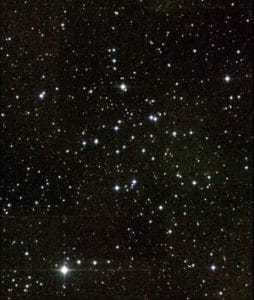
Dispersed cluster M 34
M 34 is a collection of roughly one hundred stars positioned to the eastern side of the nebula. This cluster is fairly bright and visually appealing, and can be observed throughout the year in the Perseus constellation. It is situated 1400 light years away from us. The cluster spans approximately fourteen light years and is estimated to be 180 million years old. Its discovery predates 1654 and is credited to Italian astronomer Giovanni Batista Godierna. During this same period, he also identified the Triangle Galaxy or M 33.
M 33 is situated to the south of the nebula, within the Triangle constellation, and is located at a distance of approximately three million light years. It is a spiral galaxy spanning 50,000 light years. One of its arms contains a collection of two hundred of the brightest hypergiant stars, which is a rare type of star.
M 76 is an intriguing nebula located in the northeastern region. It is characterized by a white dwarf situated at its core, surrounded by an ionized gas shell. This nebula was first discovered in 1780 by the notable French astronomer Pierre Mechene. It can be observed in the constellation Perseus and is situated approximately 2,500 light years away.
Observing the Night Sky
After exploring various sources of information and coming across stunning images online, it’s only natural to feel the urge to step outside and witness the beauty of the galaxy in the night sky.
While I hope not to disappoint you, it’s worth noting that the Andromeda Nebula appears as a faint star from our perspective on Earth. However, with the aid of binoculars, there is a chance of spotting a small elliptical shape. Through a telescope, the nebula will appear larger, with a bright center and pale edges. You may even catch a glimpse of M 32 and M 110. If you happen to have a 25 cm telescope, you might also be able to observe galactic dust lanes.
If you haven’t had a change of heart, we opt for warmer clothing, select a dimmer evening, and choose a more joyous group of people. Then, we venture out to the countryside, preferably a considerable distance away, to ensure that the glow of civilization doesn’t interfere with its radiance. According to experts, the ideal time for stargazing is during the autumn and winter months. If you’re familiar with the locations of Polaris and the Cassiopeia asterism, you can attempt to locate it through them. Simply draw a line from Polaris to alpha Cassiopeia, mentally extend the line further, and take a moment to rest your gaze on a hazy oval shape – this is the magnificent Andromeda Galaxy.
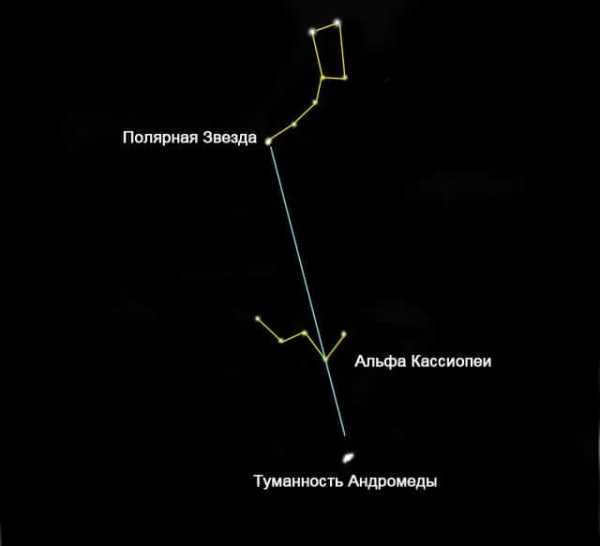
How to locate Andromeda
What comes next
Scientists propose the potential for a collision between the Milky Way and the Andromeda Nebula, but the actual likelihood remains unclear.
We already have knowledge that the galaxy is rapidly approaching the Sun at a velocity of 300 kilometers per second. Scientists have determined the movement of our star within the Milky Way, its direction, and by analyzing this data, they have calculated that the two galaxies are hurtling towards each other at a speed of 140 kilometers per second. This collision, according to their calculations, is expected to occur in 4 billion years. It is reasonable to assume that instead of two small galaxies, there will be one large galaxy, and there is a possibility that our solar system may be ejected in an unknown direction. However, the planets are likely to survive.
In a different scenario, the people of Earth will have the opportunity to witness a gradual assimilation or fusion, whichever they prefer, with no adverse effects.
However, during that time, Earth’s inhabitants will likely be preoccupied with other concerns, unless we have already relocated to another planet. It is during this period that our sun will begin its transformation into a red giant. We will be able to witness what unfolds next.
Interestingly, according to one hypothesis, our neighboring galaxy Andromeda was formed from the merger of two galaxies, similar to the process described above. This event took place around three billion years ago.
According to another theory, the Magellanic Clouds will merge with the Milky Way, prior to its collision with the Andromeda galaxy.
Science is an ever-evolving field, constantly advancing with the invention of new equipment and the development of new research methods. As space stations venture further into outer space, what was once considered scientifically proven and justified may soon be proven wrong. Theories and hypotheses that are proposed today may lose their relevance in light of new discoveries within a year.
With each passing day, new data is being uncovered, and the cosmos presents intriguing puzzles that mankind must strive to solve. Astronomers, astrophysicists, and cosmonauts, among others, are fortunate to be part of this exciting journey, as their work is constantly pushing the boundaries of knowledge.
And you are not left behind, frequently lift your heads, bending down with problems and thoughts upwards – there, where beyond every misty spot or point, there might be billions and trillions of the most exquisite galaxies hidden, and perhaps at this very moment, somewhere out there, someone is gazing in our direction, simply marveling at the splendid starry canopy.

The universe is filled with vast rotating cities of stars known as galaxies. It is estimated that there are at least 100 billion galaxies in the cosmos, each separated from one another by unimaginable distances of empty space. From Earth, without the aid of a telescope, we can only observe three galaxies and a portion of our own Milky Way Galaxy. Two of these galaxies are referred to as the Magellanic Clouds.
The Magellanic Clouds were named after the Portuguese explorer Fernan Magellan. During Magellan’s expedition in 1519, his crew members spotted two dimly glowing galaxies in the sky while sailing in the southern seas. They returned to Europe with this exciting news.
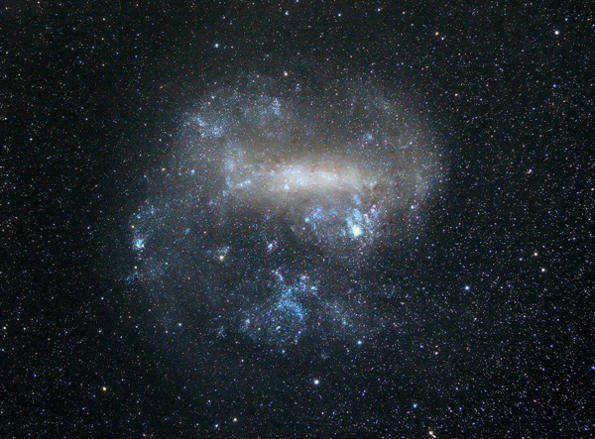
The galaxy known as the Magellanic Clouds.
The Magellanic Clouds display a distinct appearance resembling two compact and solid clouds. These two minor galaxies revolve around the more substantial Milky Way galaxy, making them our closest celestial neighbors. In terms of size, the Magellanic Clouds are relatively small. One of them is comprised of approximately 15 billion suns, while the other contains only about 5 billion. In contrast, our very own Milky Way galaxy hosts a staggering 200 billion stars.
The galaxy known as the Andromeda Nebula
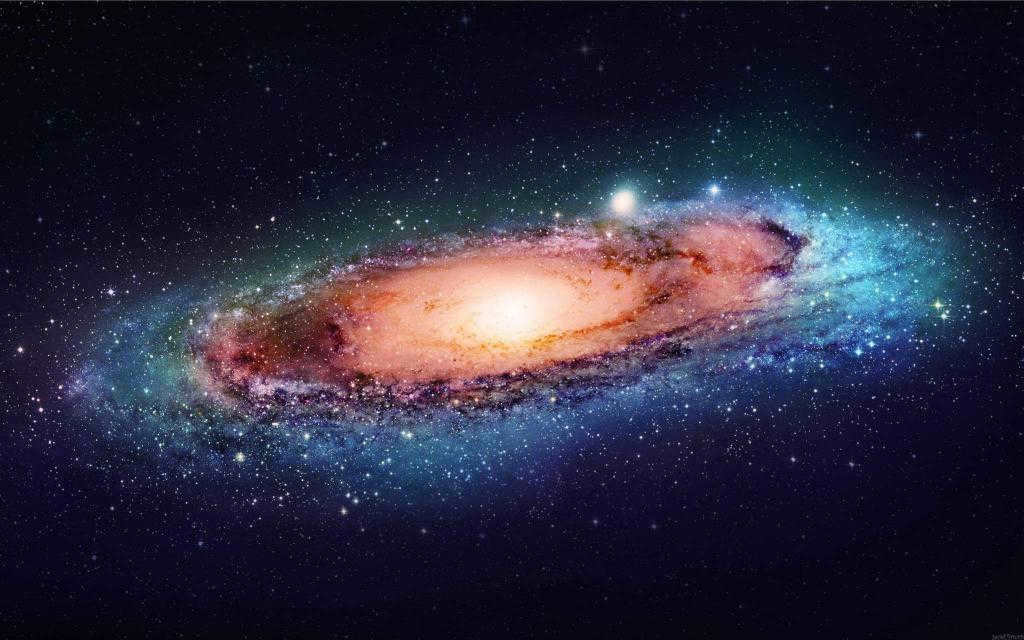
The Andromeda Nebula, a spiral galaxy resembling our Milky Way, is the third galaxy that can be observed by the naked eye. It is located at a distance of 2.2 million light years from Earth. A light year is a unit of distance equal to the distance that light travels in one year, which is approximately 9.6 trillion kilometers, traveling at a speed of 300,000 kilometers per second.
This means that the Andromeda Nebula is approximately 21,120,000,000,000,000,000,000,000,000,000,000 kilometers away from Earth. It takes light 2.2 million years to reach us from the Andromeda Nebula, so when we observe it, we are actually seeing the galaxy as it appeared 2.2 million years ago.
There are numerous fascinating and unique names for other galaxies that can only be seen through a telescope. One example is a small galaxy known as Sculptor. In the vast expanse of the night sky, we can find galaxies with names like Dragon, Pincers, Leo 1 and Leo 2, Sextan, Pegasus, Wagon, and Sombrero.
Unique Galaxy Names
However, with approximately 100 billion galaxies in the Universe, it is highly likely that there are not enough names to assign to each one individually. As a result, galaxies are often given letter – numerical designations. In the 18th century, a French astronomer named Charles Mesier created a list of unidentified luminous celestial bodies, which included several galaxies. To differentiate each object, Mesier assigned them numbers such as M1, M2, and so on. For instance, the Andromeda Nebula is designated as M31.
Subsequently, astronomers made advancements in creating more comprehensive and intricate inventories of cosmic entities such as constellations and nebulae. Numerous galaxies are identified solely by numbers in either the New General Catalog or the Index Catalog. For instance, the Andromeda Nebula is listed as NGG224. The term “galaxy” originates from the Greek word “hala”, which translates to “milk”.

